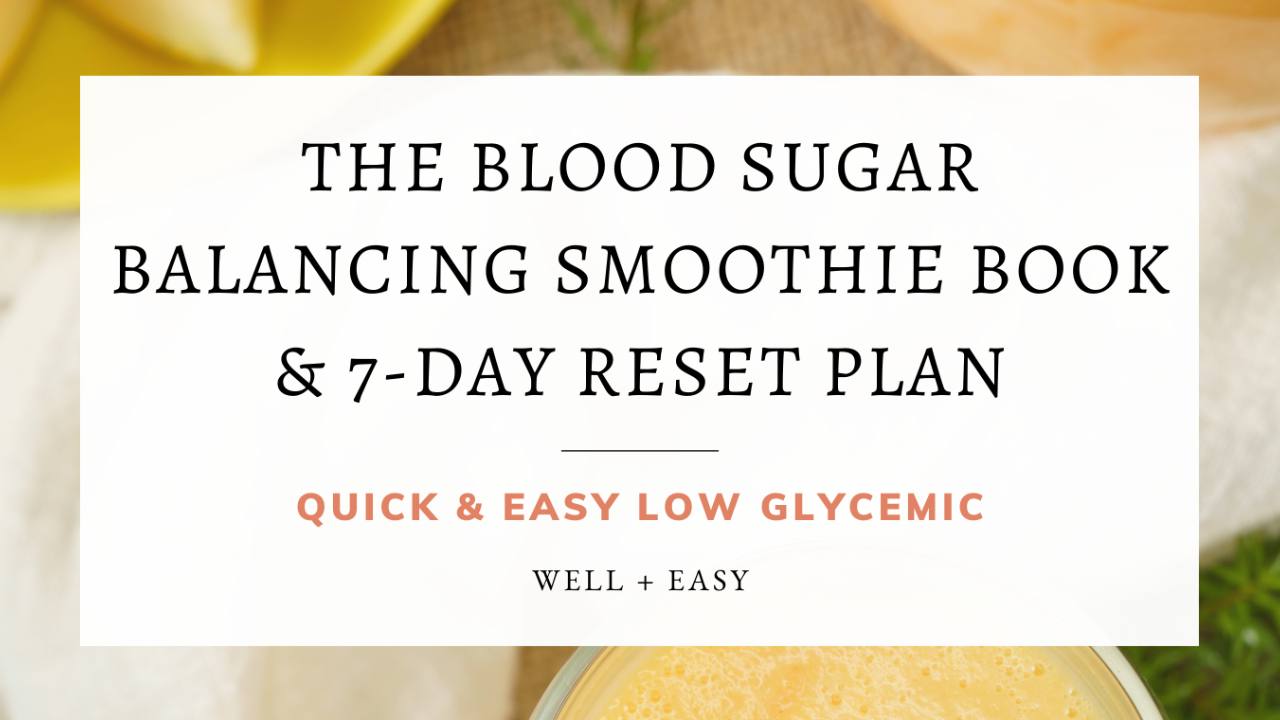The Complete Guide to 50+ Zero Glycemic Load Foods
GUIDE •

Understanding Glycemic Load and Its Impact on Your Health
In the world of blood sugar management, especially for women over 40 dealing with prediabetes, insulin resistance, or hormonal imbalances like PCOS and menopause, understanding glycemic load (GL) has become a crucial tool for reclaiming health and energy.
While most people are familiar with the glycemic index (GI), glycemic load offers a more comprehensive and practical approach to managing blood sugar. This is because GL accounts for both the quality of carbohydrates (how quickly they raise blood sugar) AND the quantity of carbohydrates in a typical serving.
This distinction is vital. Two foods might have the same glycemic index, but if one contains significantly fewer carbohydrates per serving, it will have a much lower impact on your blood sugar levels in real life.
How Glycemic Load Works: The Formula
Glycemic load is calculated using this formula:
GL = (GI × Carbohydrate content per serving in grams) ÷ 100
For example:
- A medium apple has a GI of 38 and contains about 15g of carbohydrates
- GL = (38 × 15) ÷ 100 = 5.7 (Low GL)
This gives us a much more accurate picture of how foods actually affect blood sugar in real-world portions.
Glycemic Load Categories
GL values are typically categorized as:
- Low GL: 1-10 (Gentle impact on blood sugar)
- Medium GL: 11-19 (Moderate impact on blood sugar)
- High GL: 20 and above (Significant impact on blood sugar)
Foods with a 0 glycemic load contain no carbohydrates or such minimal amounts that they have virtually no effect on blood sugar levels—making them invaluable tools for blood sugar management.
The Blood Sugar Connection: Why GL Matters for Your Health
When we follow the Whole GI Protocol framework at Well + Easy, we emphasize understanding glycemic load because it directly impacts:
1. Energy Stability
Those afternoon energy crashes that leave you reaching for coffee or sugary snacks? They're often the result of eating high-GL foods earlier in the day. When you focus on lower GL options, especially at breakfast and lunch, you maintain steady energy levels throughout the day—a cornerstone of the Whole GI Protocol.
2. Stubborn Weight Loss
For women over 40 struggling with weight that won't budge despite "doing everything right," high-GL foods may be the culprit. When blood sugar spikes, insulin (your fat-storage hormone) rises, making it nearly impossible to lose weight—particularly around the midsection.
As Kerry, one of our Low GI Living members, discovered: "Once I started focusing on glycemic load rather than just counting calories, the weight finally started coming off. I've lost 6.5 pounds and my husband has lost 8 pounds!"
3. Chronic Condition Management
For those managing prediabetes, PCOS, insulin resistance, or menopausal symptoms, keeping GL low can be transformative:
- Prediabetes: Research shows that focusing on low-GL foods can help reduce A1C levels and potentially reverse prediabetes.
- PCOS: Low-GL eating helps manage the insulin resistance that drives many PCOS symptoms.
- Menopause: Hormonal changes during menopause can increase insulin resistance; low-GL eating helps counteract this effect.
4. Long-term Health Protection
Beyond immediate symptoms, focusing on GL helps protect against:
- Heart disease
- Type 2 diabetes
- Cognitive decline
- Chronic inflammation
Jan, another member, shared: "My A1C was 6.4, and I knew I needed to do something before it turned into type 2 diabetes. By focusing on low and zero GL foods as part of the Whole GI Protocol, I lowered my A1C to 5.9 in just 90 days."
Comprehensive List of Zero Glycemic Load Foods
These foods form the foundation of a blood sugar-friendly eating approach. Because they contain no carbohydrates or only trace amounts, they have minimal impact on blood sugar levels, making them ideal choices for stabilizing glucose.
Animal Proteins
All pure animal proteins have zero glycemic load because they contain no carbohydrates:
Meat and Poultry:
- Beef (all cuts)
- Chicken (all parts)
- Turkey
- Pork
- Lamb
- Duck
- Game meats (venison, bison, etc.)
Fish and Seafood:
- Salmon
- Trout
- Tuna
- Cod
- Halibut
- Sardines (excellent for omega-3 fatty acids)
- Mackerel
- Shrimp
- Scallops
- Crab
- Lobster
- Oysters
- Clams
Eggs:
- Whole eggs
- Egg whites
- Duck eggs
- Quail eggs
Dairy Products
Many dairy products have such low carbohydrate content that their GL is effectively zero:
Cheeses:
- Hard cheeses (cheddar, parmesan, swiss)
- Soft cheeses (brie, camembert)
- Cream cheese
- Cottage cheese (in small amounts)
- Greek yogurt (full-fat, plain varieties)
- Sour cream (full-fat)
Important note: Always check labels, as some dairy products have added sugars that increase their GL.
Healthy Fats and Oils
Pure fats contain no carbohydrates and therefore have zero glycemic load:
Oils:
- Olive oil (extra virgin preferred)
- Avocado oil
- Coconut oil
- MCT oil
- Flaxseed oil
- Walnut oil
Other Fats:
- Butter
- Ghee
- Avocados (technically a fruit but extremely low in carbs)
- Olives
- Coconut meat
- Nuts and seeds (in moderation as they do contain some carbs)
Non-Starchy Vegetables
While technically containing small amounts of carbohydrates, these vegetables have such high fiber content and low carb density that their GL is negligible in normal portions:
Leafy Greens:
- Spinach
- Kale
- Arugula
- Lettuce (all varieties)
- Swiss chard
- Collard greens
Cruciferous Vegetables:
- Broccoli
- Cauliflower
- Brussels sprouts
- Cabbage
- Bok choy
Other Non-Starchy Vegetables:
- Cucumber
- Zucchini
- Bell peppers
- Mushrooms
- Asparagus
- Celery
- Green beans
- Eggplant
- Tomatoes (technically a fruit but used as a vegetable)
- Onions (in moderation)
- Garlic
- Leeks
- Radishes
- Artichokes
- Jicama
Herbs, Spices, and Condiments
Most herbs and spices contain minimal carbohydrates and have zero glycemic load:
Herbs:
- Basil
- Oregano
- Thyme
- Rosemary
- Cilantro
- Parsley
- Mint
- Dill
Spices:
- Cinnamon (bonus: helps regulate blood sugar)
- Turmeric
- Cumin
- Paprika
- Black pepper
- Cayenne pepper
- Ginger
- Nutmeg
Condiments (check labels for added sugars):
- Mustard
- Vinegar (all varieties)
- Hot sauce (sugar-free)
- Mayonnaise (full-fat, without added sugars)
- Soy sauce/tamari (in moderation due to sodium)
- Pesto (homemade without added sugars)
Drinks
These beverages have zero glycemic load:




